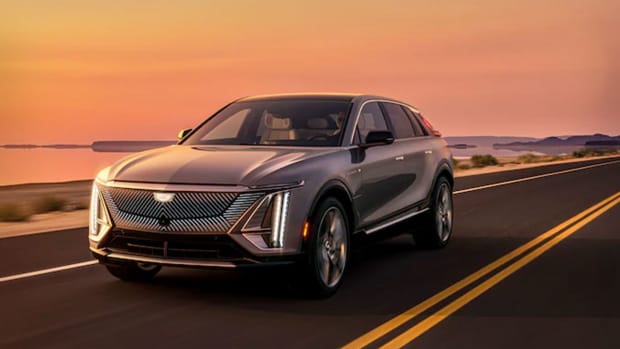
General Motors has just made a promise that sounds like a feat.
The ambitions of the Detroit giant in the electric vehicle segment are known.
And for those who had doubts, they should look at the portfolio of the four brands of the group. With the exception of Buick, GM's three other brands -- Chevrolet, Cadillac and GMC -- offer electric models and will expand their lineups in the coming months.
Chevrolet has the Chevy Bolt EV/EUV. It will add the Chevy Equinox EV, the Chevy Blazer EV and the Chevrolet Silverado. What is interesting to note is that Chevrolet places electric vehicles in price segments aimed at attracting the greatest number of consumers. All these vehicles are SUVs and pickups/trucks, segments with lucrative margins, whose demand is very high compared to sedans.
GMC has an electric version of the iconic Hummer, which will soon be joined by the GMC Sierra EV. Cadillac occupies the premium and luxury segment with the Cadillac Lyriq SUV and the very luxurious Cadillac Celestiq.

Cadillac
EVs Will Be Profitable in 3 Years
Run by Mary Barra, the company which sold less than 25,000 electric vehicles in 2021, aims to produce 1 million annually from 2025 as demand for green cars increases.
For the first time, GM (GM) announced, on November 17, that its electric division will be profitable in 2025. In other words, in three years, its electric vehicles will start contributing to the company’s bottom line like gasoline vehicles.
The big promise was made during an investor day in New York.
The legacy maker told investors that its "rapidly growing portfolio of electric vehicles will be solidly profitable in 2025 in North America as the company scales EV capacity in the region to more than 1 million units annually, ramps up its software revenue opportunities, generates significant greenhouse gas benefits and realizes the positive impacts of new clean energy tax credits."
The vow left investors speechless as they didn't expect the billions of dollars of investment automakers are pouring into electric vehicle development to pay off before the end of the decade.
But CEO Mary Barra said new elements had emerged that hadn't been there before. She listed federal incentives under the Biden administration’s Inflation Reduction Act, which includes money back for companies that produce EVs in North America as well as for consumers and fleet customers who purchase the vehicles.
"It’s clear these credits are going to help usher in a new era of technology innovation and job creation that’s going to achieve what was intended,” Barra said. "It will be good for the American economy. It’ll be good for American families. It’ll be good for the environment, and frankly, General Motors is well poised.”
GM should be eligible for a consumer tax credit of $3,750 per vehicle in 2023, CFO Paul Jacobson said. He added that the company will devote itself to sourcing the production of battery materials, to benefit from the total amount of credit which is $7,500 from 2024.
Jacobson added that GM hopes to be among the first to benefit from the full $7,500 consumer tax credit that will take into account stricter sourcing of EV battery materials.

Cadillac
EVs v. Gas Cars
Sales of electric vehicles are expected to reach 50 million in 2025, said GM, which plans to produce 400,000 vehicles a year in North America from 2022 through the first half of 2024. Annual output is expected to reach 1 million units by 2025. The Detroit giant therefore hopes to gain market share.
Currently, GM is behind Tesla (TSLA) and Ford (F) in North America in terms of production.
The total company revenue is expected to grow by 12% over the next three years by 2025, reaching more than $225 billion as EV volumes and software revenue grow, GM said.
Electric vehicles will be profitable from 2025 but not as much as gasoline cars. The company's margins, however, will remain between 8% and 10%, Jacobson said.
Another positive signal is that GM expects BrightDrop, which produces electric vans, to generate $1 billion in revenue by 2023 and $10 billion by the end of the decade. Cruise, the autonomous vehicle development subsidiary which offers a robotaxi fleet in San Francisco, is expected to generate $1 billion in revenue for GM in 2025.
"GM's ability to grow EV sales is the payoff for many years of investment in R&D, design, engineering, manufacturing, our supply chain and a new EV customer experience that is designed to be the best in the industry," Barra said in a statement.
But there is a problem: the cost of the battery.
GM said it can bring battery costs down to $87 per kilowatt hour by 2025, and to $70 beyond that.







